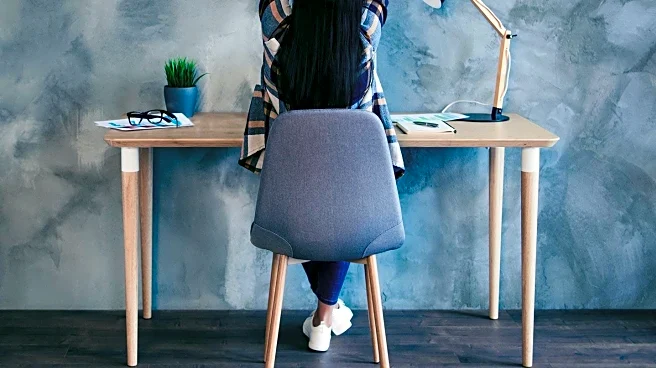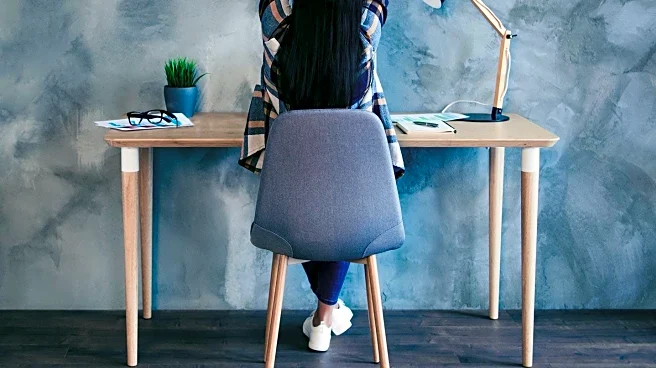What's Happening?
Millions of workers in the United States spend extended periods sitting at desks, which can lead to significant health issues, particularly lower back pain. Dr. Z, a physical therapist and owner of Elite Therapy and Wellness, emphasizes that prolonged sitting strains the lumbar spine and surrounding muscles. This lack of movement causes hip flexors to tighten and glute muscles to weaken, contributing to discomfort. Dr. Z notes that the human body is not designed to remain stationary for long periods, as this can compress the spine, reduce blood flow, and create muscle imbalances. Lower back pain is a prevalent musculoskeletal complaint in the U.S., with the American Chiropractic Association reporting that up to 80% of people will experience it at some point in their lives.
Why It's Important?
The issue of lower back pain due to sedentary lifestyles is significant, as it affects a large portion of the U.S. population. With many jobs requiring long hours of sitting, the potential for widespread health problems is considerable. Addressing this issue through simple, consistent stretching routines can alleviate pain and improve posture, offering a practical solution for workers. By promoting movement and flexibility, individuals can reduce the risk of long-term musculoskeletal issues, potentially decreasing healthcare costs and improving quality of life. Employers and health professionals may need to advocate for regular movement breaks to mitigate these health risks.
What's Next?
Dr. Z suggests incorporating a stretching routine into daily activities, recommending taking five minutes every hour to stand, stretch, and move. This approach can reduce stiffness and improve posture. Common stretches include seated spinal twists, standing hamstring stretches, kneeling hip flexor stretches, and cat-cow movements for spinal mobility. These exercises not only alleviate tension but also re-engage the core and glutes, essential for spinal support. As awareness of the health risks associated with prolonged sitting grows, workplaces may increasingly adopt policies encouraging regular movement breaks.
Beyond the Headlines
The cultural shift towards more sedentary lifestyles, driven by technology and modern work environments, poses long-term health challenges. Addressing these through proactive measures like stretching routines can foster a healthier workforce. Additionally, this focus on movement may influence workplace design, encouraging spaces that promote physical activity and ergonomic practices.










